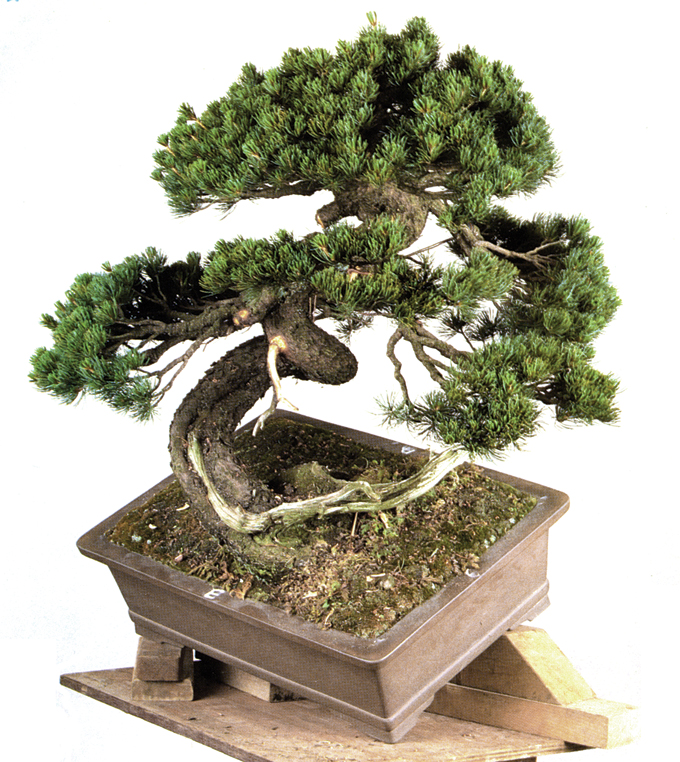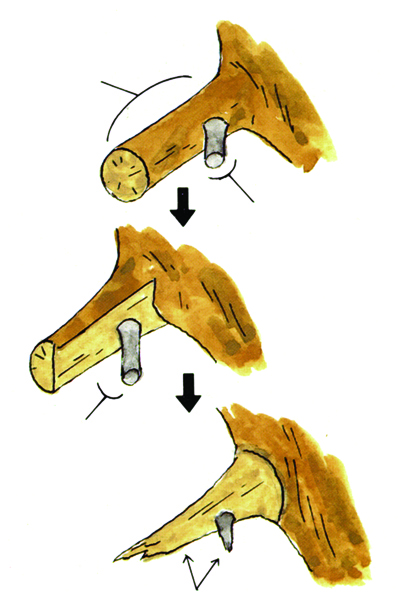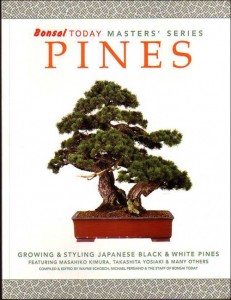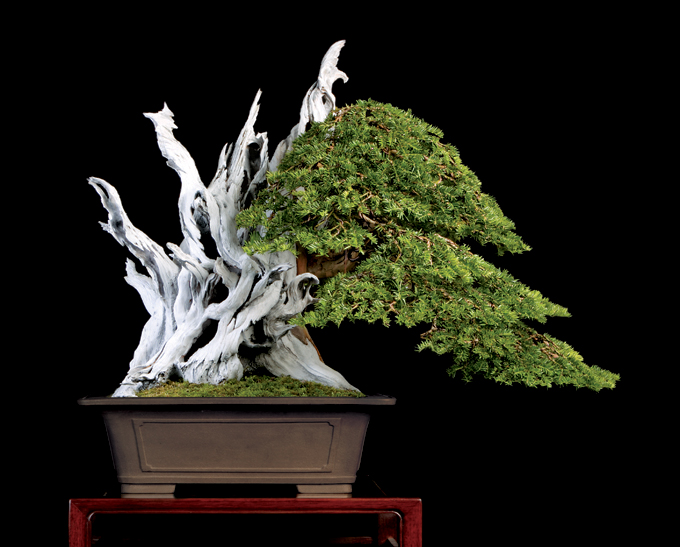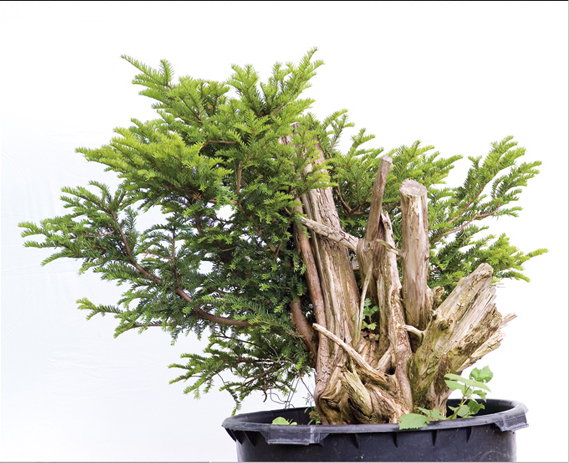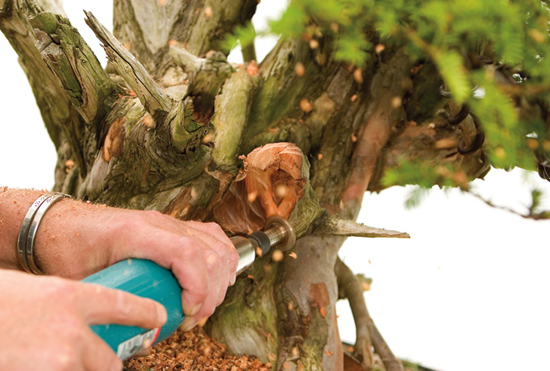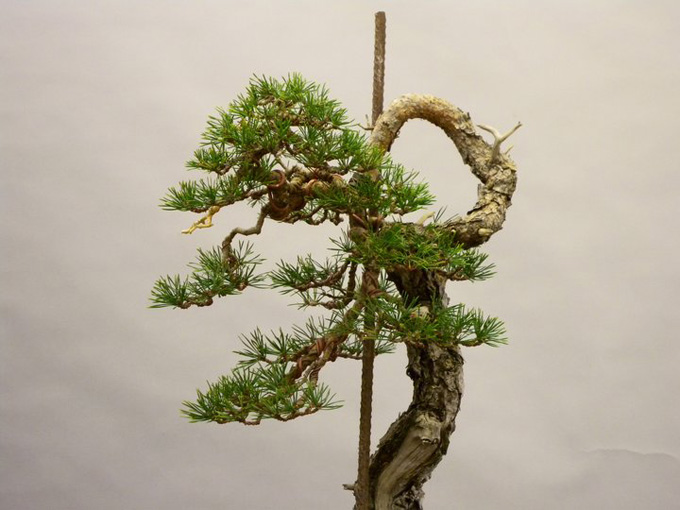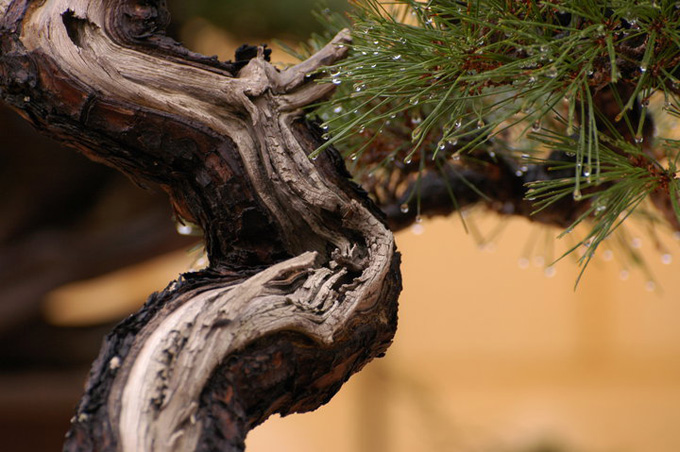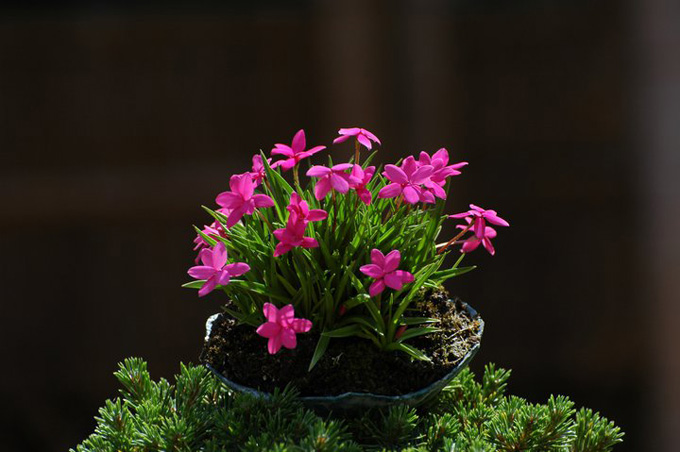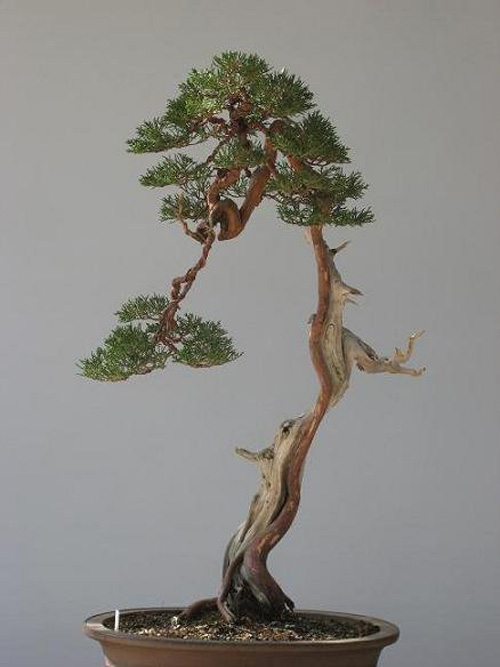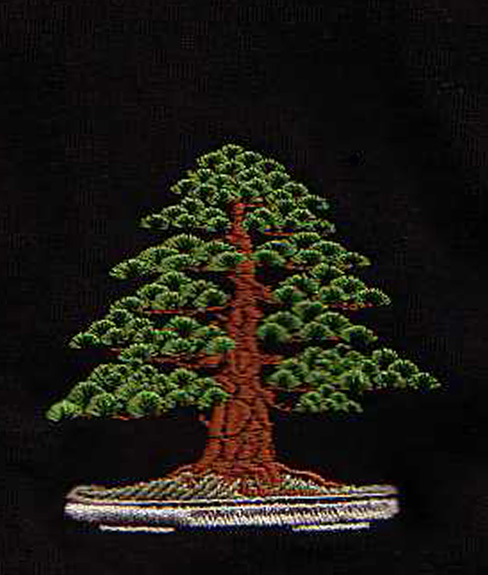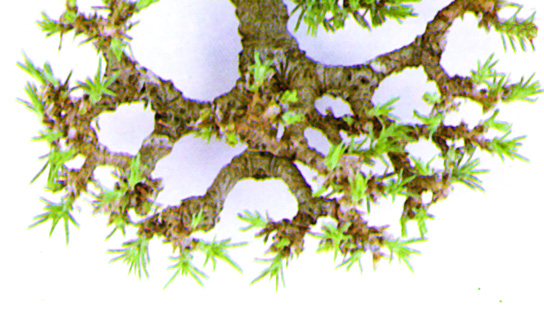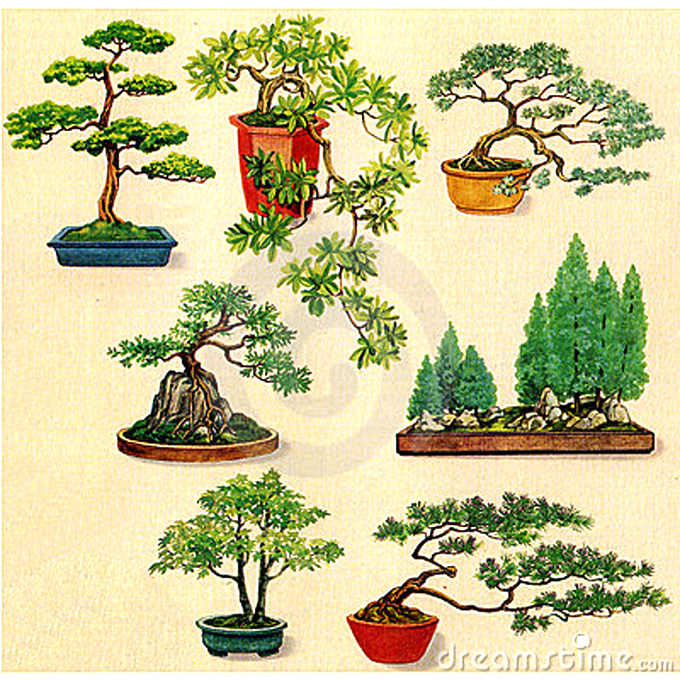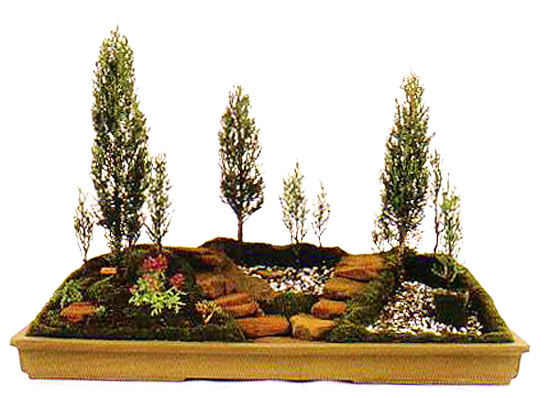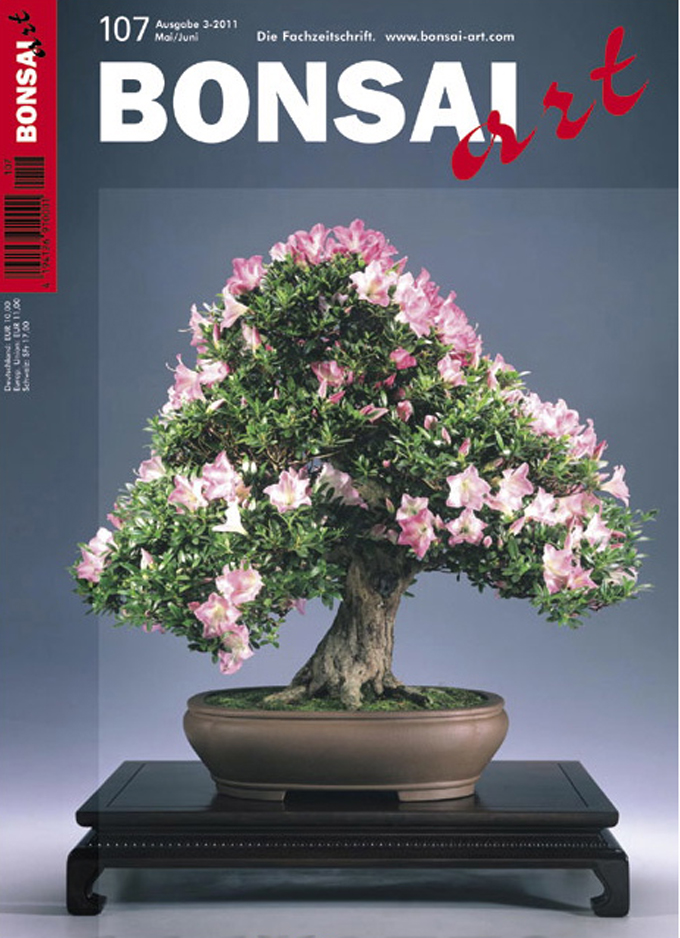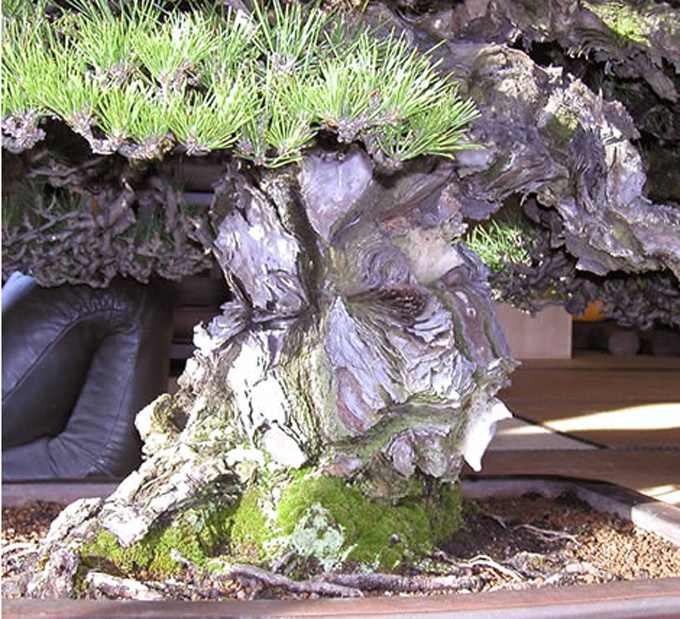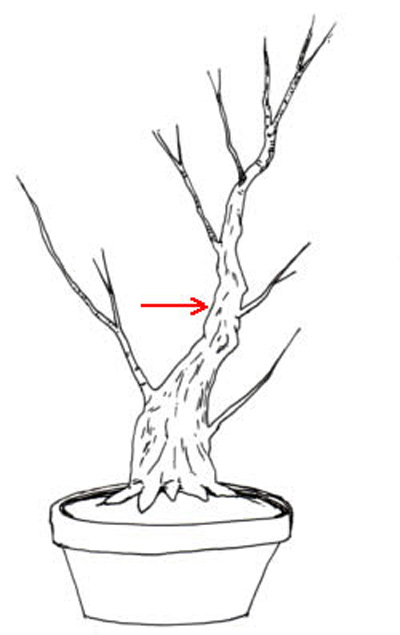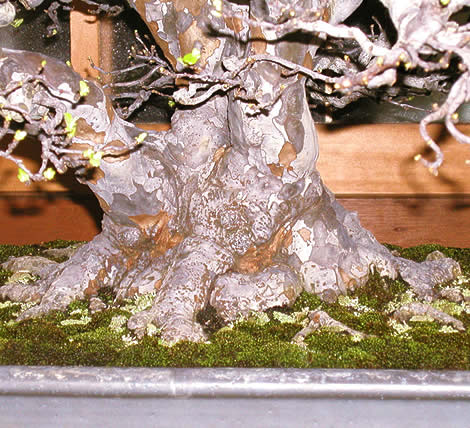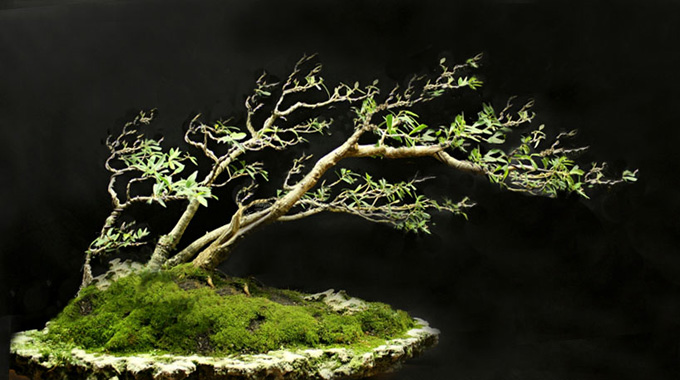 Robert Steven’s simulation of a planting submitted by someone named Bob. In Robert’s words: “Above is my simulation that suggests a strong wind blown effect. I improved the ramification structure, reduced the foliage to enhance the movement of the lines, and eliminated the grasses to avoid irrelevant conditions.” Bob’s original is below.
Robert Steven’s simulation of a planting submitted by someone named Bob. In Robert’s words: “Above is my simulation that suggests a strong wind blown effect. I improved the ramification structure, reduced the foliage to enhance the movement of the lines, and eliminated the grasses to avoid irrelevant conditions.” Bob’s original is below.
Bonsai mastery
I have long been impressed by Robert Steven’s mastery of the art of bonsai and his skill and ease with windswept bonsai (surely one of the most subtle and demanding types of bonsai), illustrates that mastery.
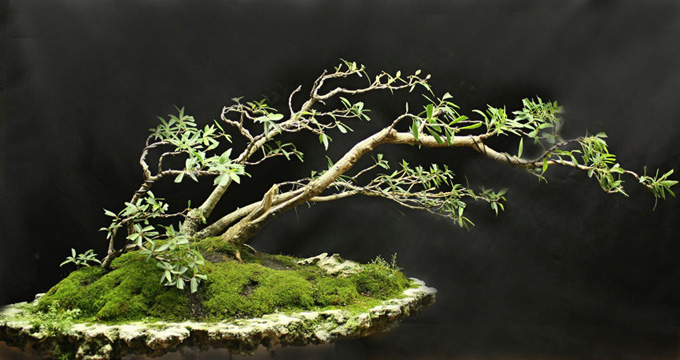 Bob’s original submission.
Bob’s original submission.
Robert’s Critique
Many people misunderstand that windswept style bonsai is simply formed by leaning the trunk and placing all the branches on one side. It is not that simple, windswept can be created in any style because in nature, wind can blow on any tree, including a tree leaning into the wind.
Windswept is a very advanced bonsai style. To make a good windswept bonsai, in addition to basic design techniques, you need to understand windswept bonsai concepts. More advanced skill is required, especially when it comes developing ramification (branching).
Windswept bonsai is not simply styled by placing all the branches on one side of a slanting trunk. There are conceptual requirements for forming ramification that give a logical sense of how the wind blows: either the wind is blowing gently, or there’s a strong wind, or the style is formed by continuous wind blowing, but not blowing at the moment.
This bonsai, although it suggests a windswept style, does not portray a group of mature trees because of improper ramification. Nor does it suggest an existing wind blowing at this moment. The foliage and the grasses do not give a moving illusion, they all look still.
To create a good windswept bonsai, the key is properly forming the ramification. The best structure is formed by the “clip-and-grow” technique, showing the flowing lines of the tiny twigs with very spare leaves. All the tips are flowing slightly upward in one direction as shown in the pictures below.
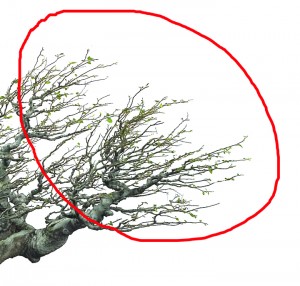
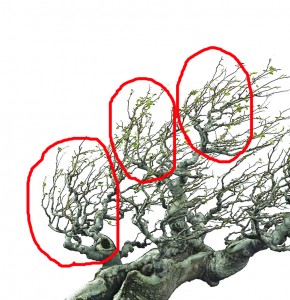
On the reverse side, we need to form some side branches with dramatic bending in the direction the wind blows, as shown on the above picture. The idea is to show that the wind causes the twigs to bend, but is not strong enough to bend the branches. The more we can play with this feature, the better the impact is.
Below is one of my windswept bonsai. Windswept bonsai can be created in any style, even on formal upright or a tree that leans into the wind, as long as the ramification is correctly formed to suggest the blowing wind (you can read the complete concept of windswept bonsai in my book Vision of My Soul).
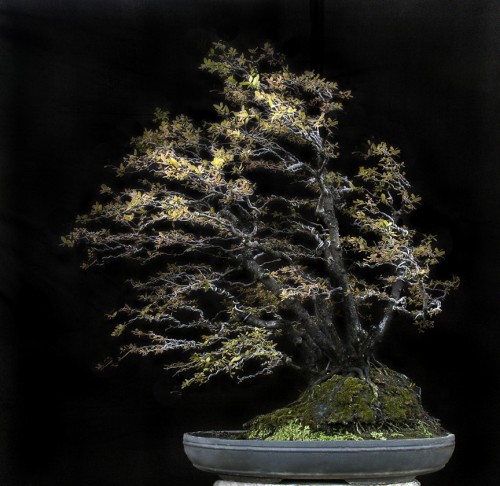
General comments
There is more than one way to design any bonsai and my critiques and recommended solutions might not always fit your taste and personal preferences, but I always try to give my opinion based on artistic and horticultural principles.
To understand my concepts better, please read my books Vision of My Soul and Mission of Transformation which are available at Stone Lantern.
You can also visit my bonsai blog.
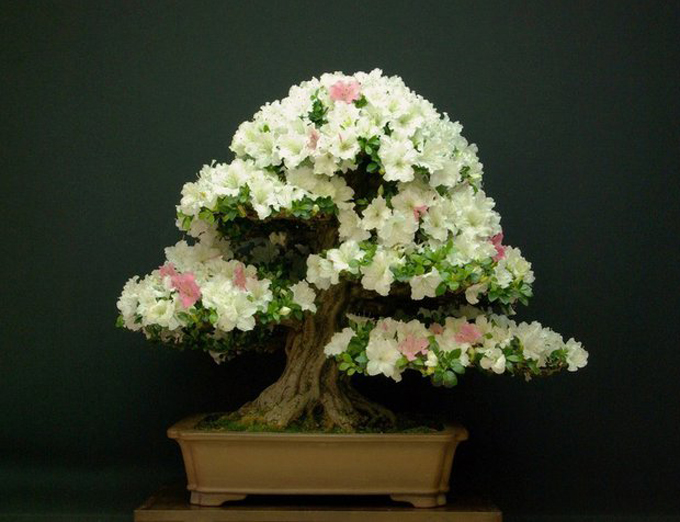 Satsuki azalea displaying a perfect blend of white with a touch of pink and soft green. The flowers dominate right now, but it’s no accident that the color of the pot enhances the not-so-shabby trunk and nebari. An earlier shot of the same tree appears below.
Satsuki azalea displaying a perfect blend of white with a touch of pink and soft green. The flowers dominate right now, but it’s no accident that the color of the pot enhances the not-so-shabby trunk and nebari. An earlier shot of the same tree appears below. 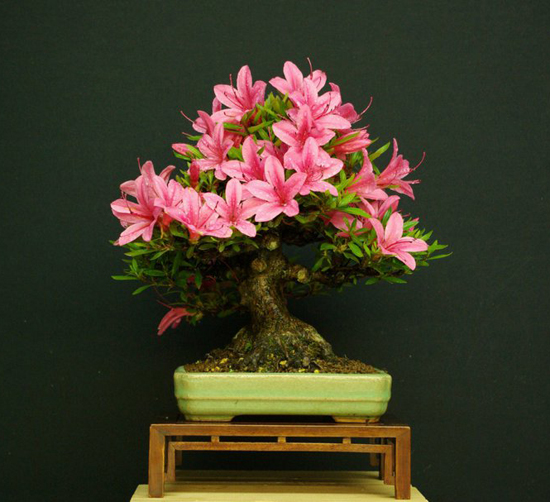 Another azalea showing off. It’s hard to tell the exact size of the tree, but judging by the flowers, I’d say it’s a shohin bonsai.
Another azalea showing off. It’s hard to tell the exact size of the tree, but judging by the flowers, I’d say it’s a shohin bonsai. The fleeting flowers are gone. With a little luck (and diligence) the birds will spare the fruit. Looks like shohin crabapple.
The fleeting flowers are gone. With a little luck (and diligence) the birds will spare the fruit. Looks like shohin crabapple. 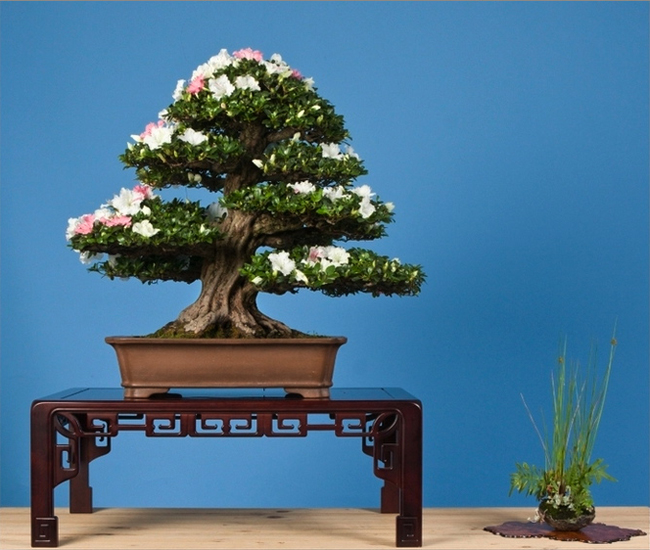 Here’s the same tree that’s at the top of the post. A little earlier in the season, before the flowers completely take over. This one is from Andres’ website.
Here’s the same tree that’s at the top of the post. A little earlier in the season, before the flowers completely take over. This one is from Andres’ website. 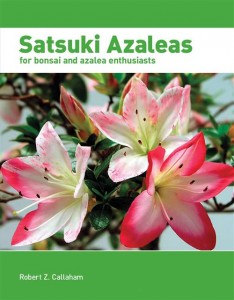 Have you seen our Satsuki Azalea book?
Have you seen our Satsuki Azalea book? 